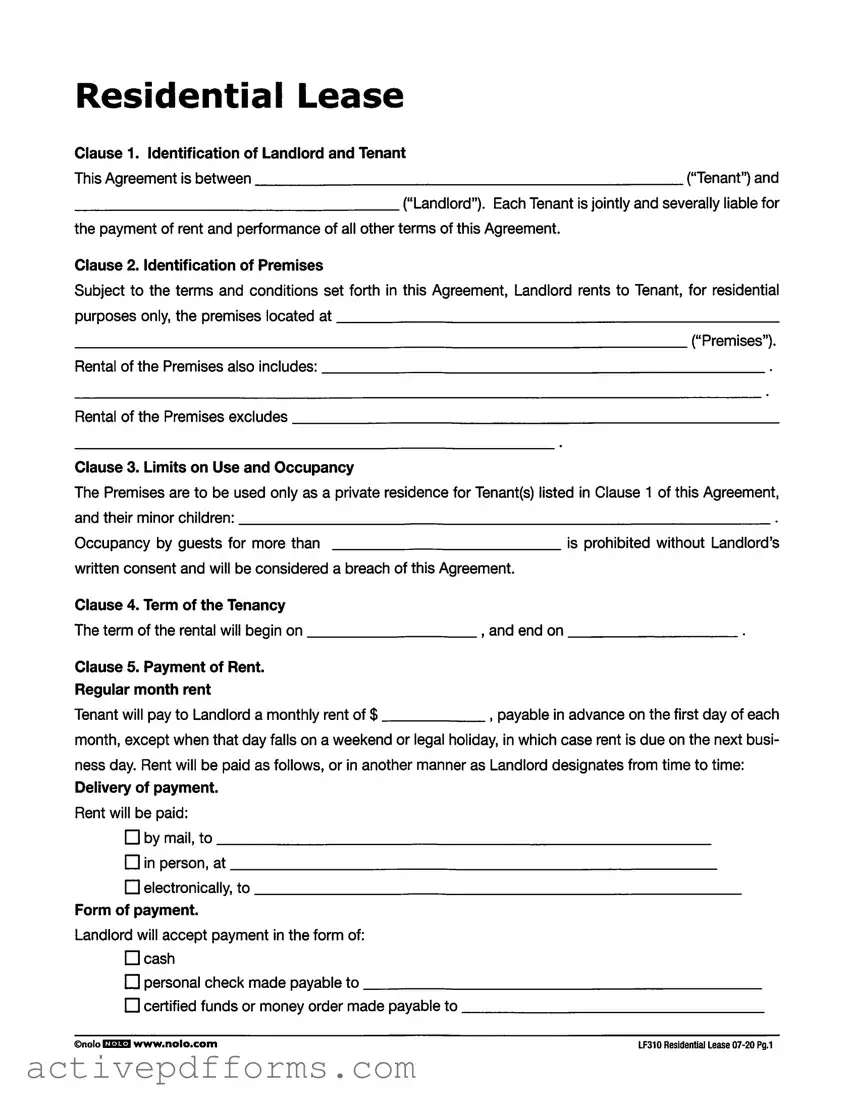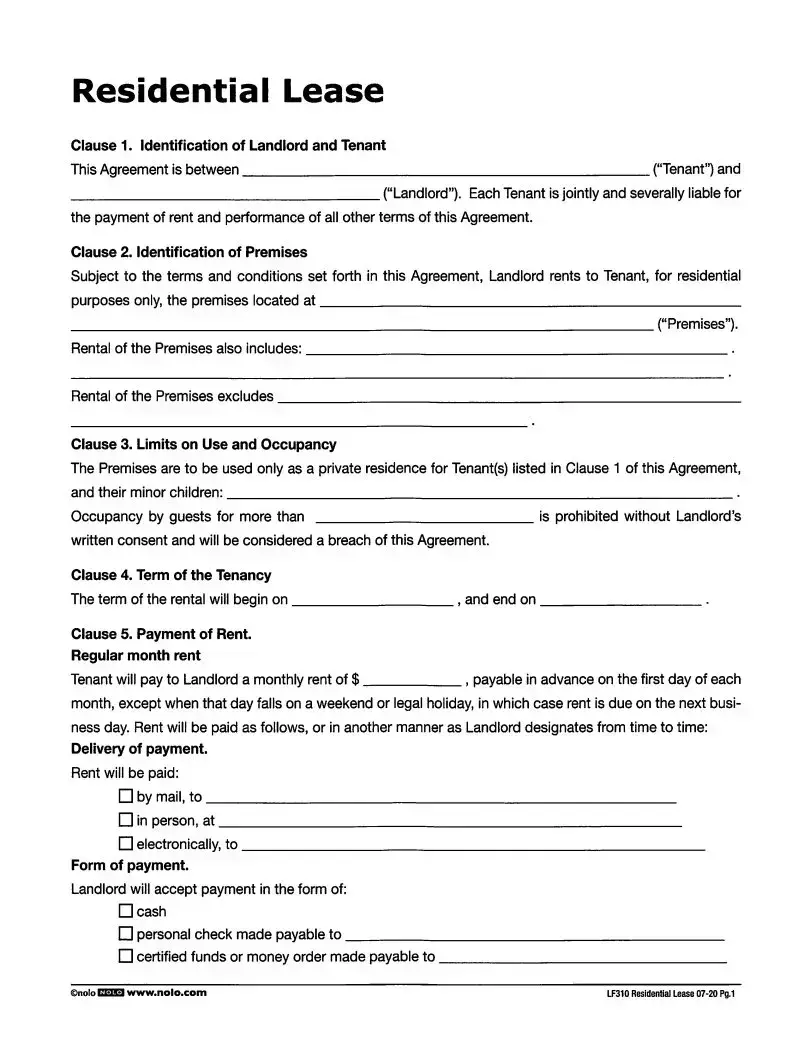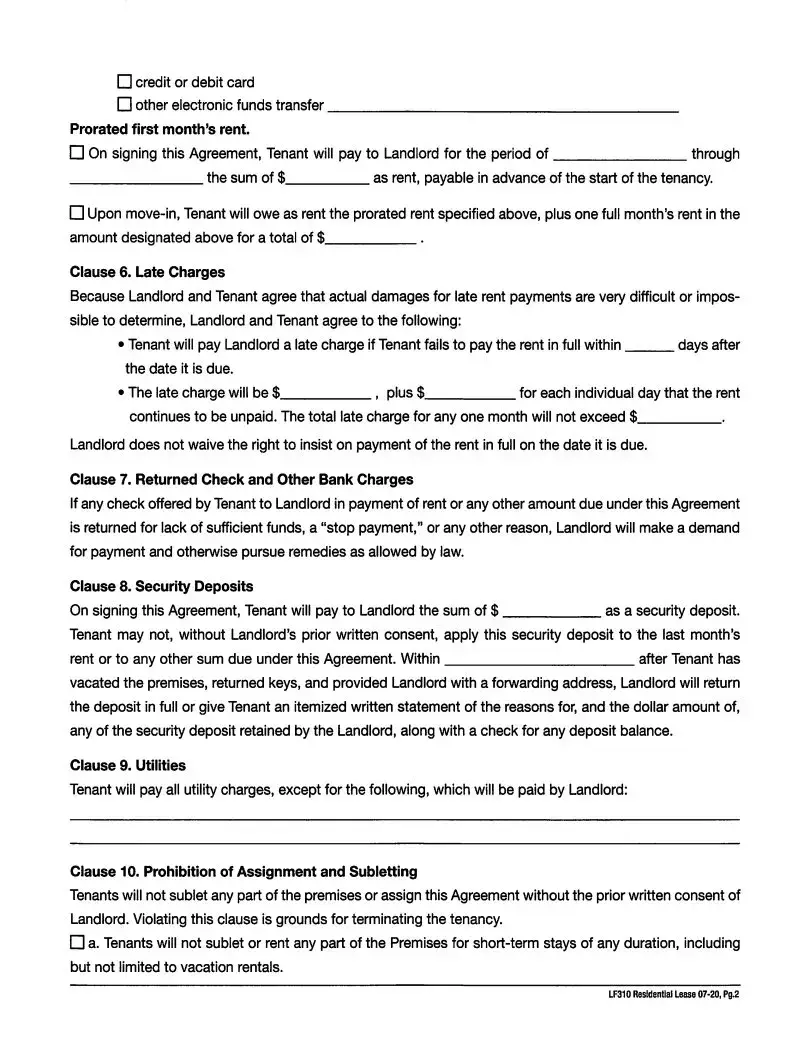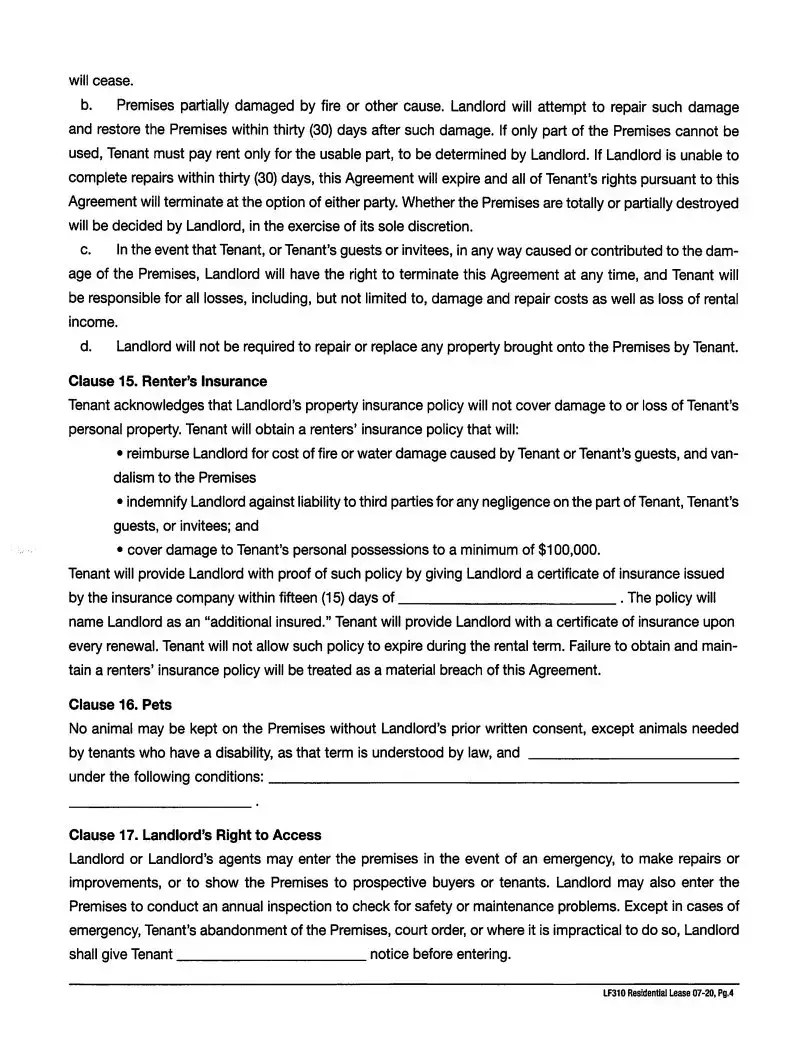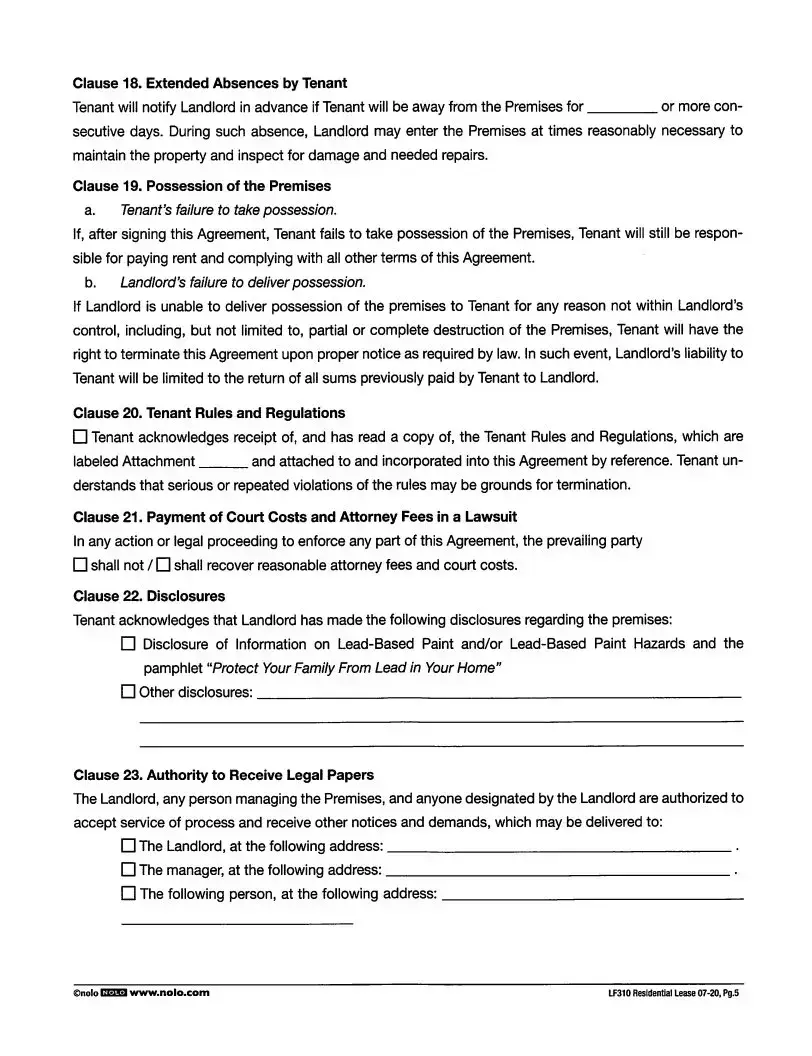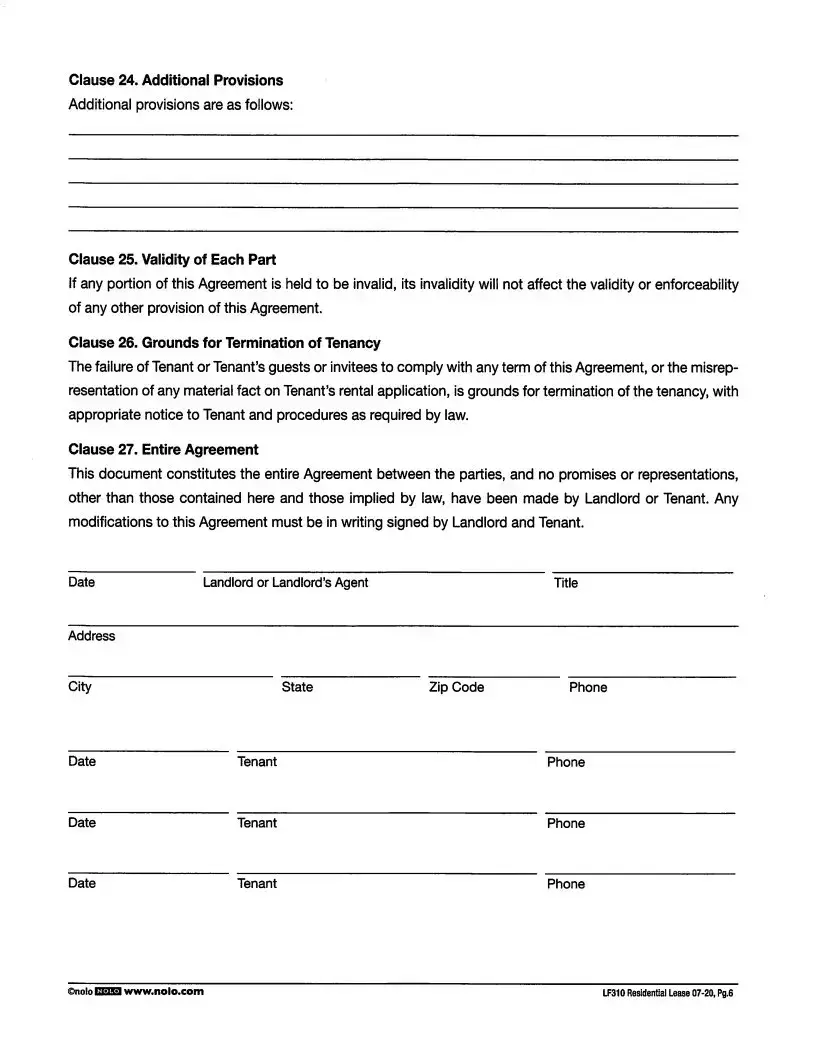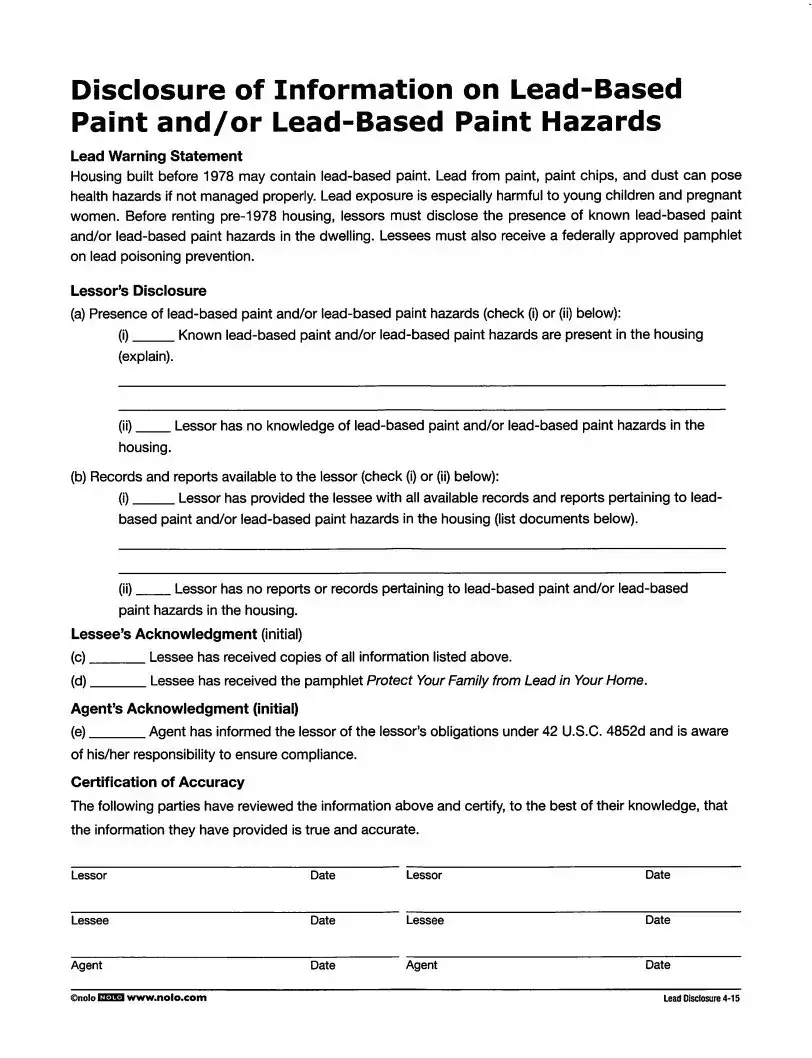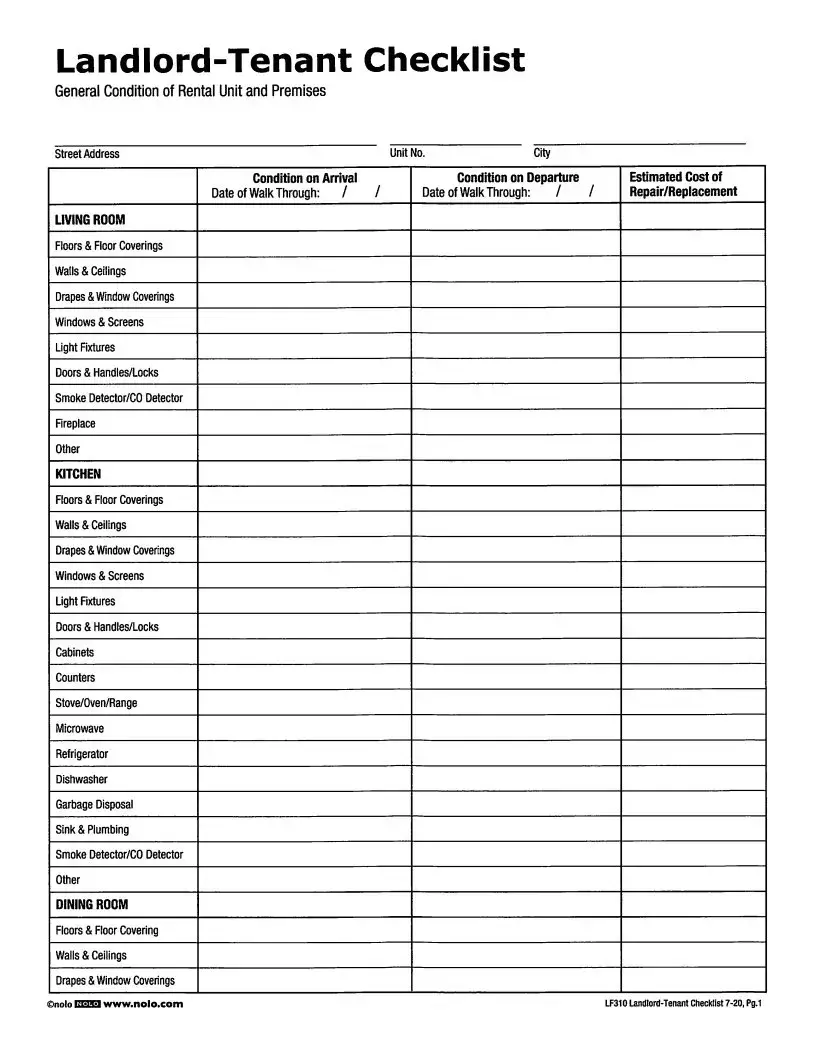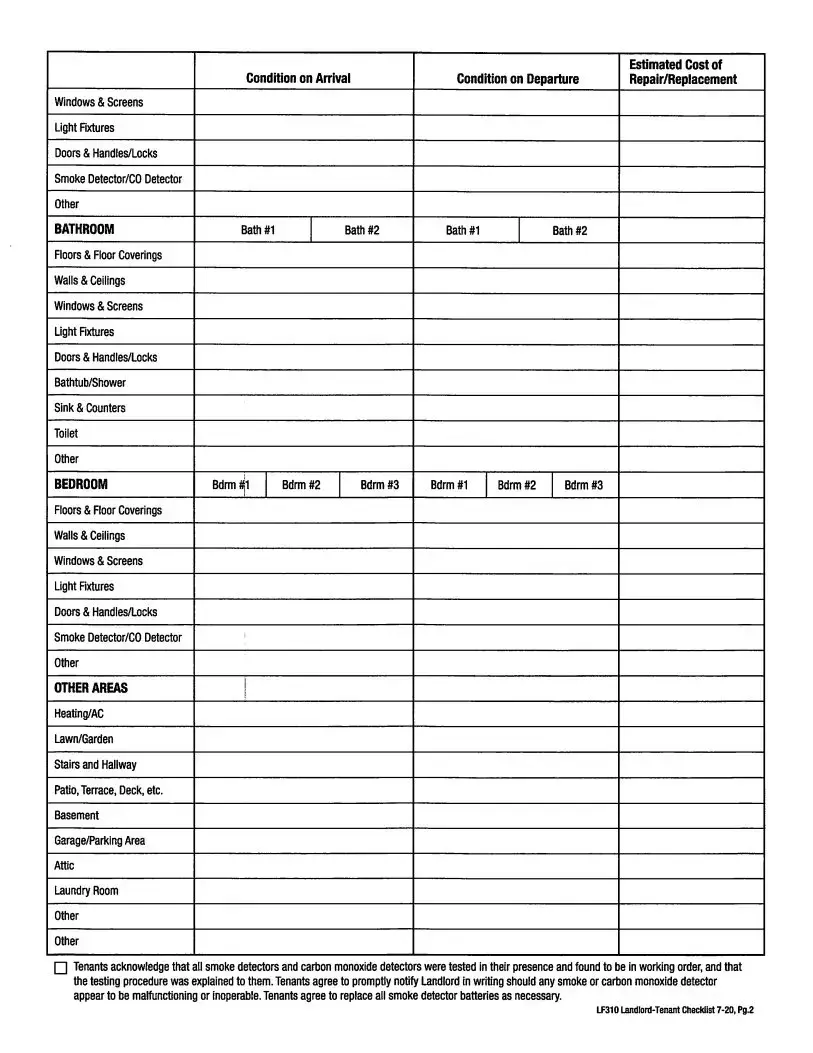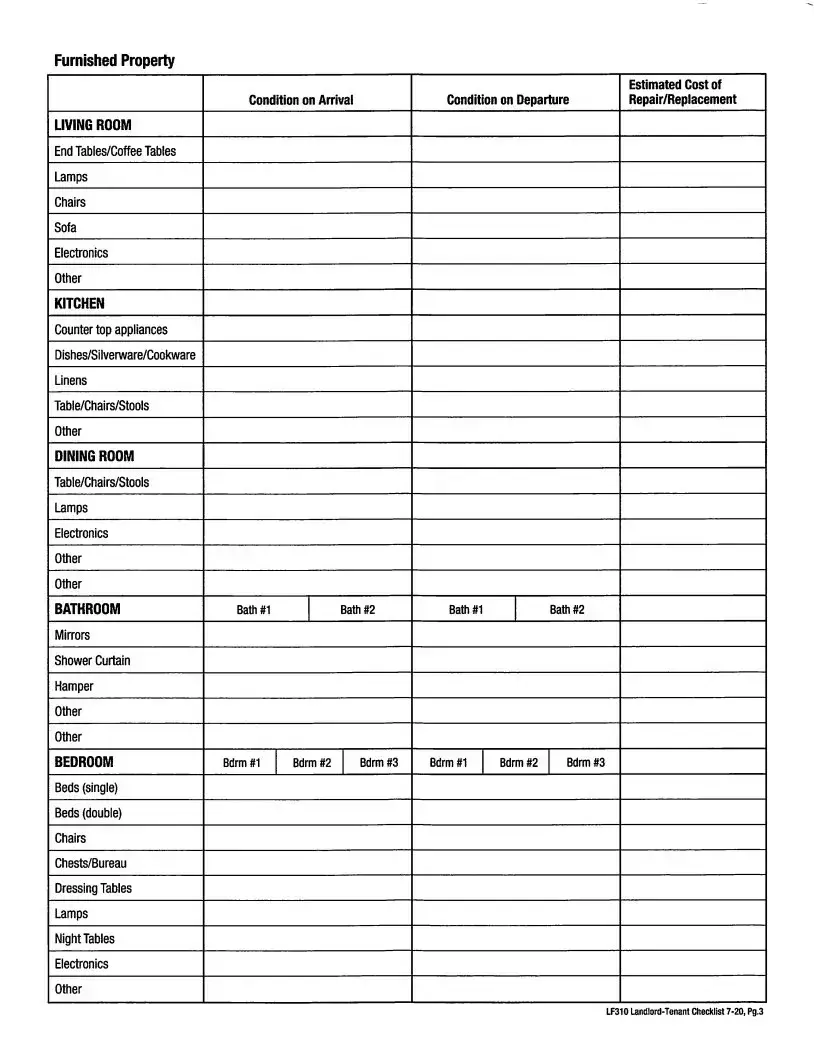Navigating the landscape of residential leasing can be a complex endeavor, both for tenants and landlords, which is why the LF310 Residential Lease form plays a pivotal role in simplifying this process. Designed to cover the essentials of a leasing agreement, this form facilitates a mutual understanding between the landlord and tenant, ensuring clarity and agreement on key aspects of the lease. At the outset, it identifies the parties involved, establishing a legal foundation for the relationship. It spells out the specifics of the premises being rented, including what is included and excluded, setting clear expectations for both sides. The form also meticulously outlines use and occupancy limits, ensuring the property is used solely as a private residence, while addressing the nuances of guest occupancy and the consequences of breaches. Another critical component is the lease term, which clearly states the start and end dates, providing a timeline for the tenancy. Terms regarding the payment of rent are detailed, including the monthly rent amount, payment methods, and deadlines, ensuring both parties are on the same page about financial obligations. The form tackles late charges, highlighting the consequences of delayed payments, bringing a sense of urgency and responsibility to rent payment timelines. Additionally, it dives into the procedure for handling returned checks and other bank charges, further solidifying the financial aspects of the lease. The role of security deposits is clarified, including conditions for deductions and refunds, providing peace of mind and financial security for both tenant and landlord. Lastly, it addresses utilities, assigning responsibility for payments, and prohibits the assignment and subletting of the premises without consent, thus preventing unauthorized occupancy changes. The LF310 Residential Lease form, by covering these comprehensive aspects, aims to cultivate a transparent, respectful, and law-abiding tenancy, ensuring both parties enjoy a harmonious leasing experience.
